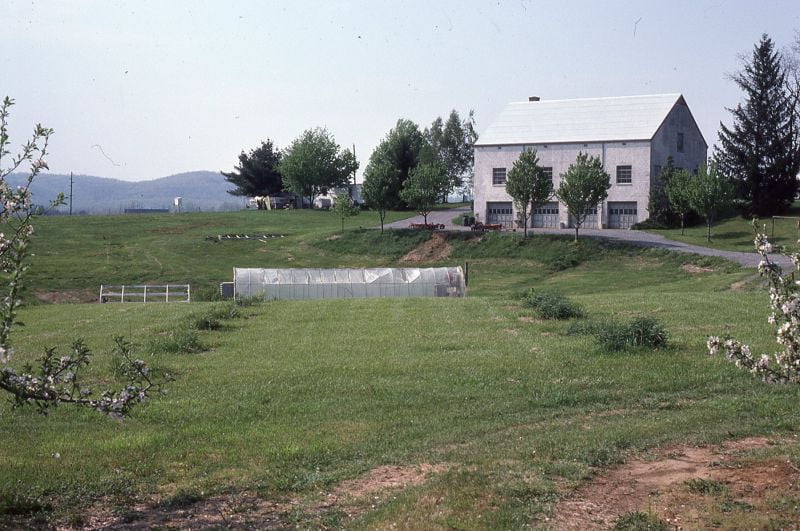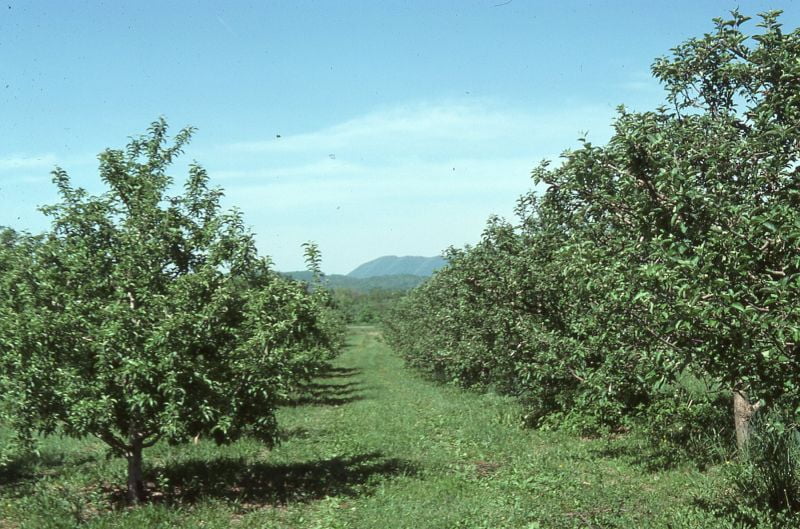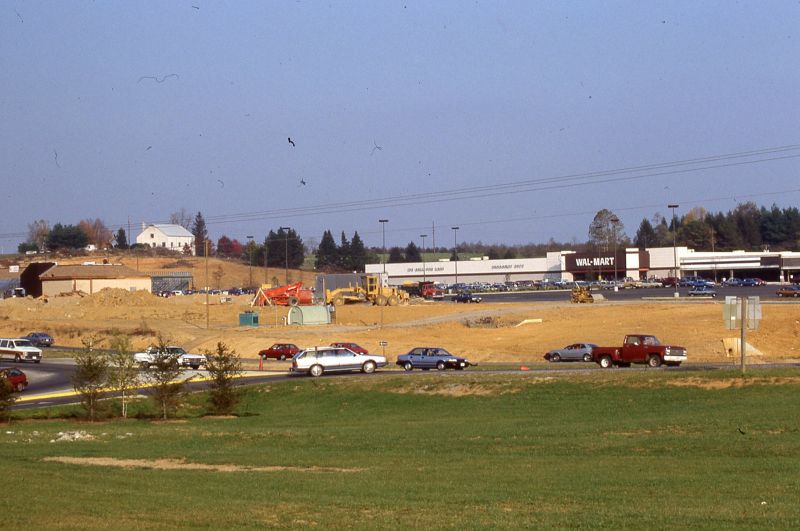Marty Gordon
Work has begun reviving the Marketplace Shopping Center at 2705 Market Street in Christiansburg, but many people remember the site’s roots as a Virginia Tech orchard.

Until the mid-80s, Virginia Tech operated a horticultural research facility on the land that became the Marketplace Shopping Center.
A land deal in the mid-80s swapped the orchard for 1,000 acres of rolling agricultural land along the New River and led to Christiansburg’s retail center landscape.
At the center of the orchard swap was real-estate developer Jay D. Nicewonder, a longtime supporter of the university and William Matthews, a former associate athletic director at Tech. The two would spearhead the exchange and carve a piece of the area’s history.
The orchard property was valued at $3.6 million and encompassed the university’s 220-acre agricultural research area. The property Tech received in return was known as the Whitethorn Plantation, now Kentland Farm, part of the university’s 3,000 acre teaching, research and extension College Farm operation.

Media reports from 1987 said Tech officials offered the exchange after realizing the school’s agricultural land was disappearing under building, expansions, highways and other development.
Following the swap, developers moved quickly for a rezoning that allowed a strip mall on the largest part of the property. The area’s first Walmart would soon locate on the site.
Jon Wooge is a past manager at the university’s research farm and remembers the fields full of apple and peach trees, grapes, blackberries and raspberries.
“We had 25 acres of apples and another 20 of peaches,” he said. “The orchard stretched from where the car wash entrance is now to the Microtel Extended Stay and over to Lowe’s,” he said recently.
The orchard or “Hort” as many people called it ran along the property line of the county’s former landfill before the 460 Bypass was built. Most associated with Tech and residents living in the area knew it as the “Virginia Tech Horticultural Farm.”
“We transitioned to Kentland (Farms) and moved the agricultural operation to there,” Wooge said. “We first planted 20 acres of apples at the new site.”
Wooge has fond memories of harvesting fruit from the hundreds of trees located off North Franklin Street. “I can remember the buds on the trees and then fruit weighing them down on a regular basis,” he said
The property was originally known as the Harless tract, consisting of 140 acres. The university owned approximately 90 acres of adjoining land, making it more than perfect for research. The Virginia fruit industry provided some of the funding for the land purchase along with a donation from the Virginia State Horticulture Society. Fruit continued to be grown on the Christiansburg site through 1993.
The new parcel at Kentland provided a much larger area for agricultural research, and showed evidence of early inhabitants of the area including several American Indian settlements.
Archaeologists dated the settlement on the property as far back as 1671. Frontiersman Adam Harman, according to historic documents, settled at present day Kentland in the mid-1700s.
Historian Patricia Givens Johnson wrote in her book “Kentland at Whitethorne” that ongoing attacks by Indians forced Harman and others to erect forts there and by 1830, James Randal Kent had built the existing manor house.
The property was known to change hands several times – at one point in the mid-80s, land developers considered locating a brewery or steel mill on the site.

In 1986, Tech swapped the orchard for Kentland. Some of the university and horticultural experts were critical of the move, citing concerns over karst sinkholes along the river and in the new property, but an 18-month study showed both pieces of acreage were suitable for the plantings and soil at Kentland was ideal for continued research.
The swap then was completed with approval by then Virginia Governor Gerald Baliles and retailers flocked to the property.
Walmart agreed to construct its first store at the Marketplace location before moving ten years later across the street to a much larger parcel. Other retailers followed suit and moved to new locations, leaving the vast parking lot and shopping center dilapidated and empty. That’s about to change with the revitalization of the acreage, but Wooge and others just remember what the site used to look like full of budding apple and peach trees.



